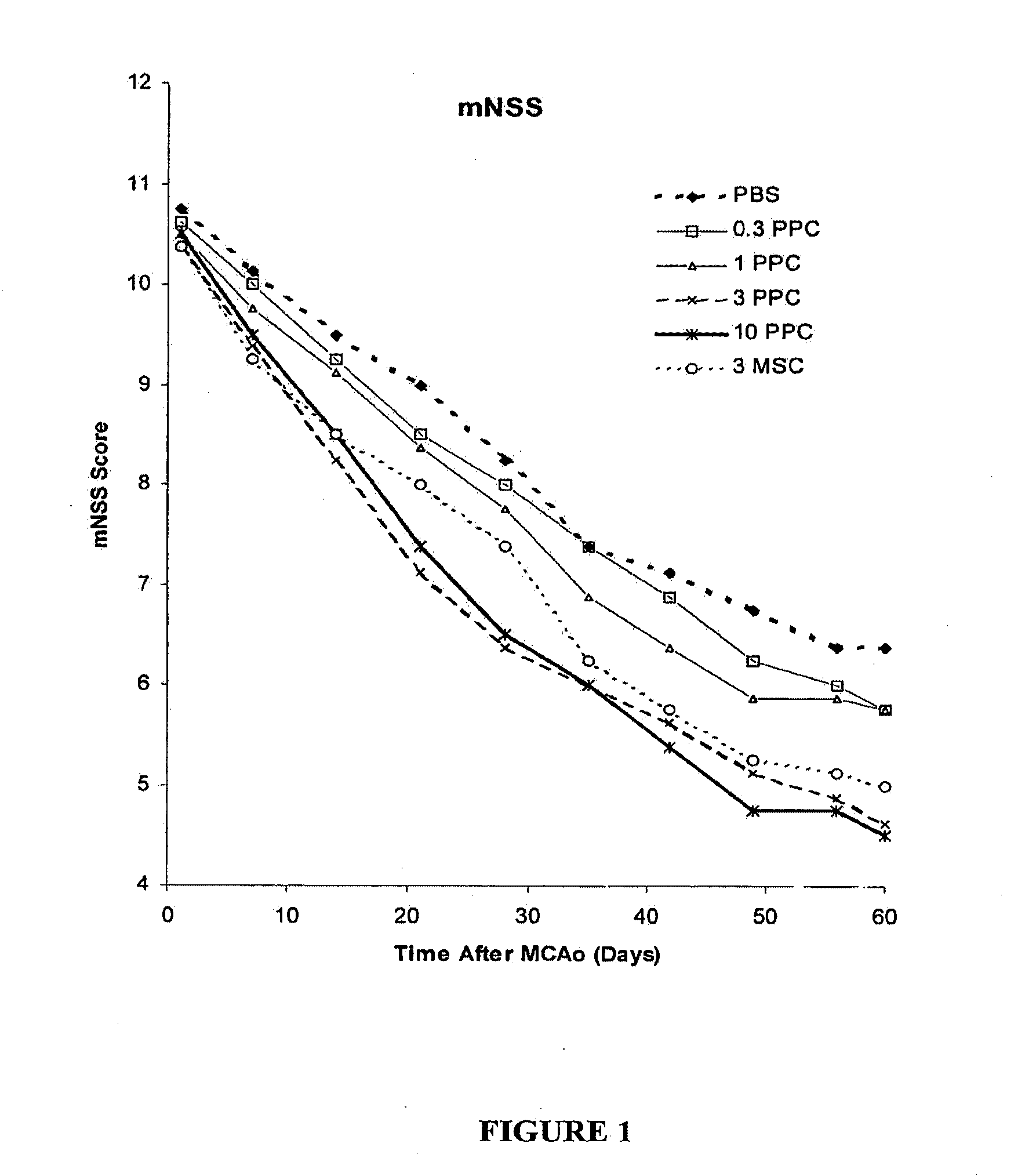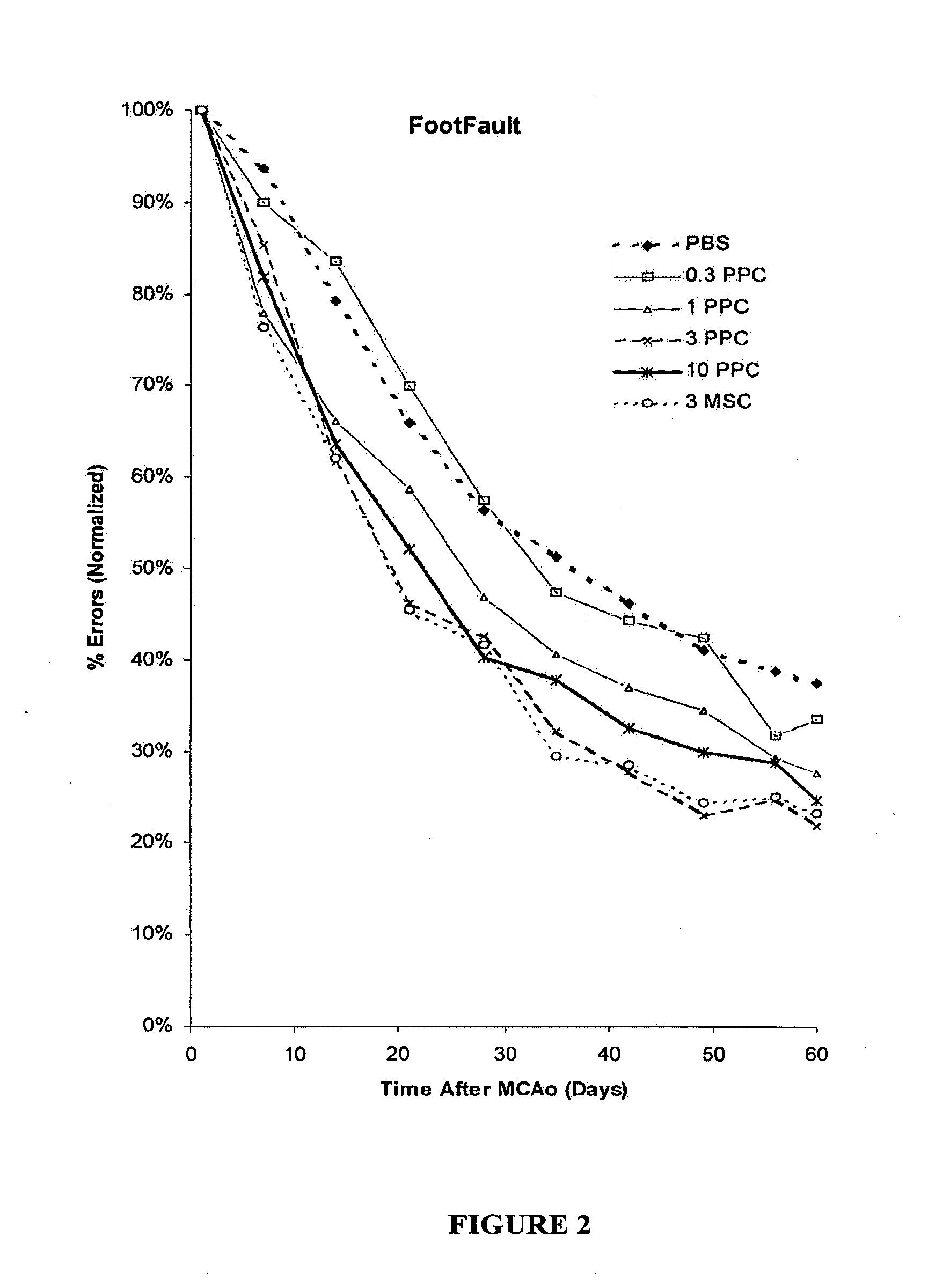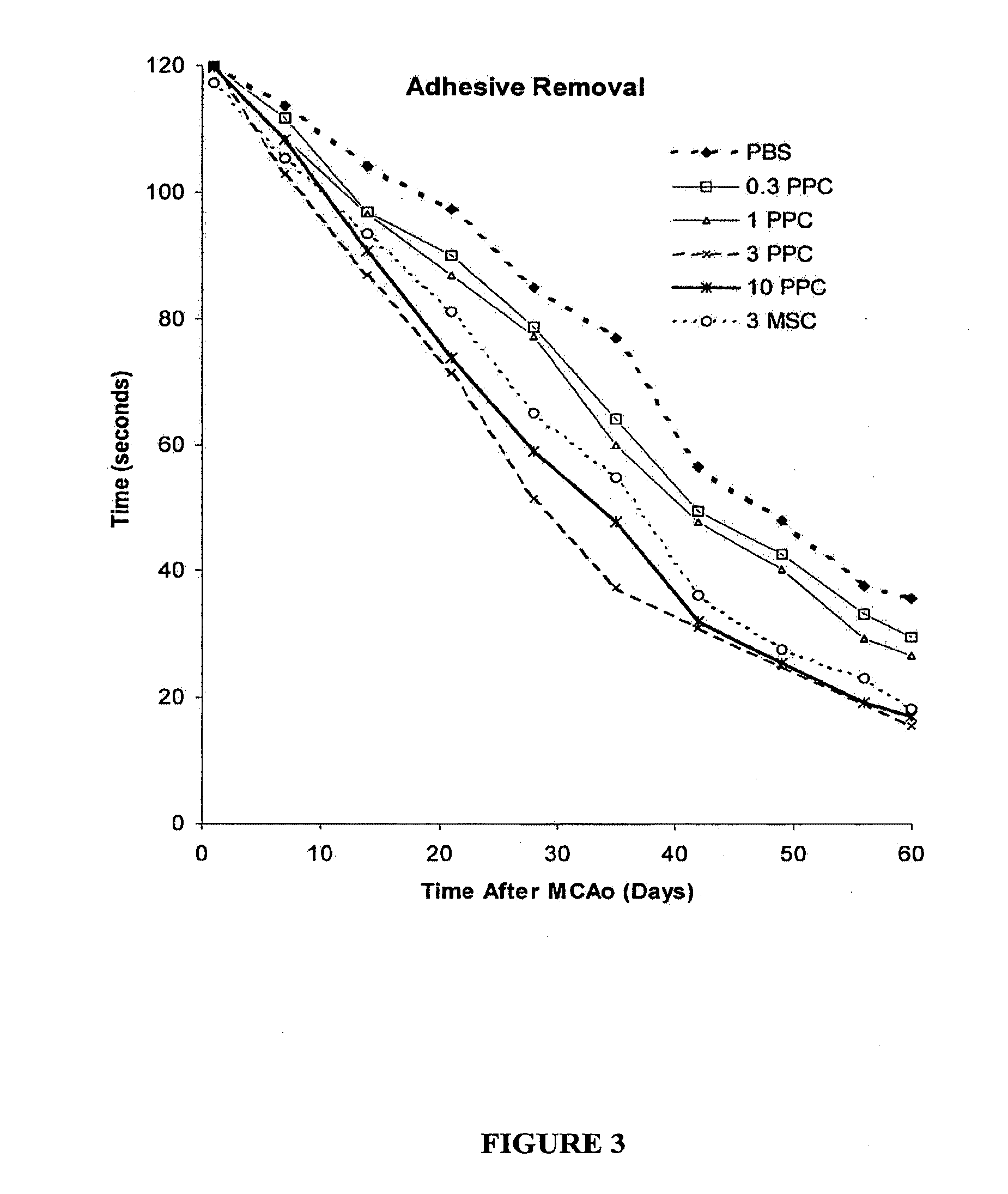Treatment of stroke and other acute neural degenerative disorders using postpartum-derived cells
a postpartum cell and neurodegenerative disease technology, applied in the field of cell-based or regenerative therapy for stroke patients, can solve the problems of bleeding into the brain, ischemic stroke is a leading cause of death of human beings worldwide, and the brain is necrosized
- Summary
- Abstract
- Description
- Claims
- Application Information
AI Technical Summary
Problems solved by technology
Method used
Image
Examples
example 1
Derivation of Cells from Postpartum Tissue
[0152]This example describes the preparation of postpartum-derived cells from placental and umbilical cord tissues. Postpartum umbilical cords and placentae were obtained upon birth of either a full term or pre-term pregnancy. Cells were harvested from 5 separate donors of umbilicus and placental tissue. Different methods of cell isolation were tested for their ability to yield cells with: 1) the potential to differentiate into cells with different phenotypes, a characteristic common to stem cells, or 2) the potential to provide trophic factors useful for other cells and tissues.
Methods & Materials
[0153]Umbilical cell isolation. Umbilical cords were obtained from National Disease Research Interchange (NDRI, Philadelphia, Pa.). The tissues were obtained following normal deliveries. The cell isolation protocol was performed aseptically in a laminar flow hood. To remove blood and debris, the cord was washed in phosphate buffered saline (PBS; In...
example 2
References for Example 2
[0193]1) Hayflick L. 1974a. J Am Geriatr Soc. 22:1-12.
[0194]2) Hayflick L. 1974b. Gerontologist. 14:37-45.
[0195]3) U.S. Patent publication US20040058412
[0196]4) U.S. Patent publication US20040048372
[0197]5) U.S. Patent publication US20040005704.
example 3
Evaluation of Growth Media for Placenta-Derived Cells
[0198]Several cell culture media were evaluated for their ability to support the growth of placenta-derived cells. The growth of placenta-derived cells in normal (20%) and low (5%) oxygen was assessed after 3 days using the MTS colorimetric assay.
Methods & Materials
[0199]Placenta-derived cells at passage 8 (P8) were seeded at 1×103 cells / well in 96 well plates in Growth Medium with penicillin / streptomycin. After 8 hours the medium was changed as described below and cells were incubated in normal (atmospheric) or low (5%, v / v) oxygen at 37° C., 5% CO2 for 48 hours. MTS was added to the culture medium (CELLTITER 96 AQueous One Solution Cell Proliferation Assay, Promega, Madison, Wis.) for 3 hours and the absorbance measured at 490 nanometers (Molecular Devices, Sunnyvale Calif.).
TABLE 3-1Culture MediaAdded fetal bovineCulture MediumSupplierserum % (v / v)DMEM low glucoseGibco Carlsbad CA0, 2 10DMEM high glucoseGibco0, 2 10RPMI 1640Med...
PUM
| Property | Measurement | Unit |
|---|---|---|
| v/v | aaaaa | aaaaa |
| total volume | aaaaa | aaaaa |
| pH | aaaaa | aaaaa |
Abstract
Description
Claims
Application Information
 Login to View More
Login to View More - R&D
- Intellectual Property
- Life Sciences
- Materials
- Tech Scout
- Unparalleled Data Quality
- Higher Quality Content
- 60% Fewer Hallucinations
Browse by: Latest US Patents, China's latest patents, Technical Efficacy Thesaurus, Application Domain, Technology Topic, Popular Technical Reports.
© 2025 PatSnap. All rights reserved.Legal|Privacy policy|Modern Slavery Act Transparency Statement|Sitemap|About US| Contact US: help@patsnap.com



